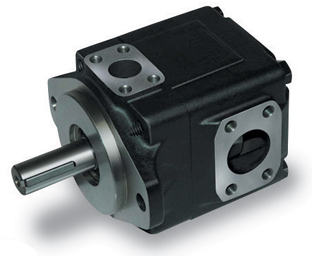Basic hydraulics: simplifying waste and recycling work
Hydraulics have proven to be a versatile and effective technology in various industries, providing precise control, reliability and extraordinary power density. Some industries are lightly equipped with hydraulic equipment, such as automation and food and beverage. By contrast, hydraulics absolutely dominate other areas, including waste management and recycling.
Waste
management and recycling is a general term to describe the process and
machinery used by municipalities to collect and process garbage, waste and
recycling. It starts at your home or workplace, where our walk-in cleaners drop
your bags or drop your containers into their trucks for transport to transfer
stations before they are unloaded and processed on-site.
Various
materials, from electronics to organic waste, are sorted before being
transported to landfills or recycling facilities. It is no exaggeration to say
that we take waste management for granted, because it is an essential aspect of
urban life and plays an essential role in maintaining public health and
environmental sustainability.
Power and precision of hydraulic motor.
One of the
most well-known applications of hydraulics in waste management is in waste
collection trucks, also known as garbage, garbage or sanitation trucks. Garbage
trucks, whether front-, rear- or side-loading, rely on hydraulic systems to
lift and empty containers, compact waste and empty it at the transfer station.
The hydraulic system is equipped with a Rexroth hydraulic
pump mounted on the transmission PTO or on the crankshaft.
There are
many styles of garbage trucks, but the most common is the rear loader. Rear
loader trucks provide a large hopper for workers to dispose of garbage or
recycling. When the hopper is full, the familiar lever-operated valves (or now,
more commonly, buttons) on the side of the truck are operated, and the
compactor lowers and pulls the waste into the body where it is compacted. This
style of truck also unloads its load much like a dump truck, using a
telescoping hydraulic cylinder to tilt the load to be unloaded at the transfer
station.
Most other
garbage collection vehicles operate with a single driver and pick up or empty
bins and containers using Rexroth
hydraulic motors. Many commercial or industrial buildings avoid
curbside collection altogether and instead use bulky steel bins or large
plastic bins. Steel containers are transported or unloaded by front-load,
roll-off or grapple trucks, which is more common in non-governmental commercial
collection operations.
Front-loading
trucks use tusk-shaped forks, which are extended down and out by hydraulic
cylinders before the operator moves forward to insert the forks into the
container lift slots. Again, with the cylinders, the load is lifted and
reversed to the top, where it is unloaded into the body. The operator often
activates control valves (or switch) to shake the container and loosen the
waste stuck to the sides and bottom, often creating a cacophony that is all too
familiar to apartment dwellers.
Other common
commercial dump trucks are hook and hook lift configurations. The grapple truck
offers one of the largest payloads, being able to haul huge waste containers or
large items to the platform using the grapple and (you guessed it) hydraulic
winch system. A hook lift truck looks similar but operates with a hydraulic
hook that extends to grab the front edge of the container and pull it toward
the structure.
Hydraulic
systems are unique actuators for garbage trucks due to the high power-to-weight
ratio of the hydraulic cylinders that turn heavier containers into
"waste," which can be easily lifted and unloaded. Finally, the
precise control provided by hydraulic systems allows operators to perform these
tasks accurately and reliably, ensuring efficient waste collection.
The modern
hydraulic technology that seems ideal for waste collection is the hybrid
hydraulic system. The use of a hydraulic
pump/motor unit and a series of hydro-pneumatic accumulators provides a
robust and efficient way to recover kinetic energy during frequent stops. The
inertia of the braking vehicle drives the pump to direct hydraulic energy to
the accumulators. When the driver accelerates, the pump rotates toward the
center to act as a motor that harnesses stored hydraulic energy to help
accelerate the truck.
Compact and easily sorted
Waste
compactors are essential to reduce the volume of waste before disposal, making
waste management more efficient and reducing the frequency of landfills.
Hydraulic compactors use powerful hydraulic cylinders to compress waste
materials, reducing their volume and making transportation and disposal easier.
Without a compactor, a garbage truck would only be able to move a dozen houses
worth of trash. The compressor increases the load to several thousand pounds
and sometimes ten tons or more.




Comments
Post a Comment